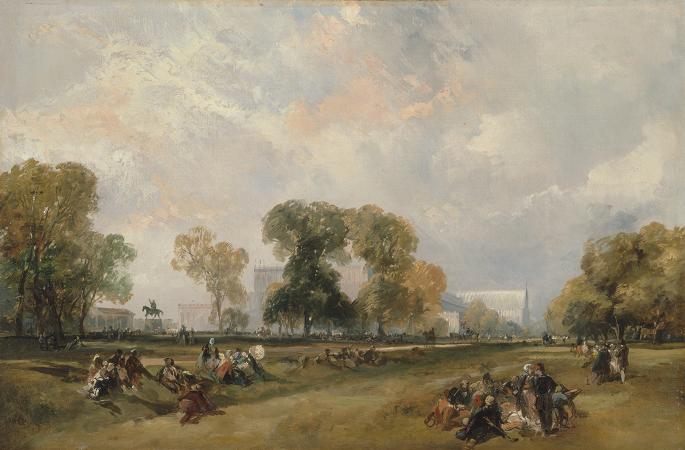
Picturesque. Picturesque is an aesthetic ideal introduced into English cultural debate in 1782 by William Gilpin in Observations on the River Wye, and Several Parts of South Wales, etc.
Relative Chiefly to Picturesque Beauty; made in the Summer of the Year 1770, a practical book which instructed England's leisured travellers to examine the face of a country by the rules of picturesque beauty. Picturesque, along with the aesthetic and cultural strands of Gothic and Celticism, was a part of the emerging Romantic sensibility of the 18th century.
The term picturesque needs to be understood in relationship to two other aesthetic ideals: the beautiful and the sublime. By the last third of the 18th century, Enlightenment and rationalist ideas about aesthetics were being challenged by looking at the experiences of beauty and sublimity as being non-rational.
Aesthetic experience was not just a rational decision-one did not look at a pleasing curved form and decide it was beautiful; rather it came naturally as a matter of basic human instinct. Edmund Burke in his 1757 A Philosophical Enquiry into the Origin of Our Ideas of the Sublime and Beautiful argued that the soft gentle curves appealed to the male sexual desire, while the sublime horrors appealed to our desires for self-preservation.
Picturesque arose as a mediator between these opposed ideals of beauty and the sublime, showing the possibilitie
Relative Chiefly to Picturesque Beauty; made in the Summer of the Year 1770, a practical book which instructed England's leisured travellers to examine the face of a country by the rules of picturesque beauty. Picturesque, along with the aesthetic and cultural strands of Gothic and Celticism, was a part of the emerging Romantic sensibility of the 18th century.
The term picturesque needs to be understood in relationship to two other aesthetic ideals: the beautiful and the sublime. By the last third of the 18th century, Enlightenment and rationalist ideas about aesthetics were being challenged by looking at the experiences of beauty and sublimity as being non-rational.
Aesthetic experience was not just a rational decision-one did not look at a pleasing curved form and decide it was beautiful; rather it came naturally as a matter of basic human instinct. Edmund Burke in his 1757 A Philosophical Enquiry into the Origin of Our Ideas of the Sublime and Beautiful argued that the soft gentle curves appealed to the male sexual desire, while the sublime horrors appealed to our desires for self-preservation.
Picturesque arose as a mediator between these opposed ideals of beauty and the sublime, showing the possibilitie
Wikipedia ...